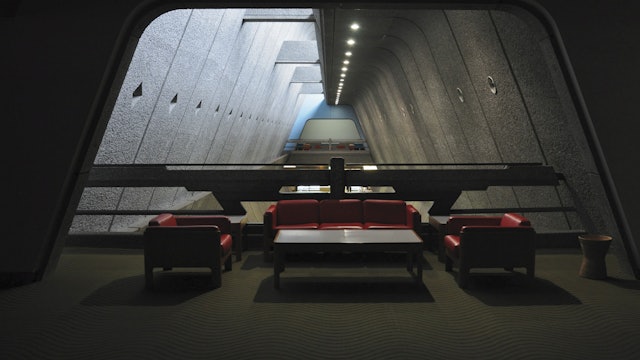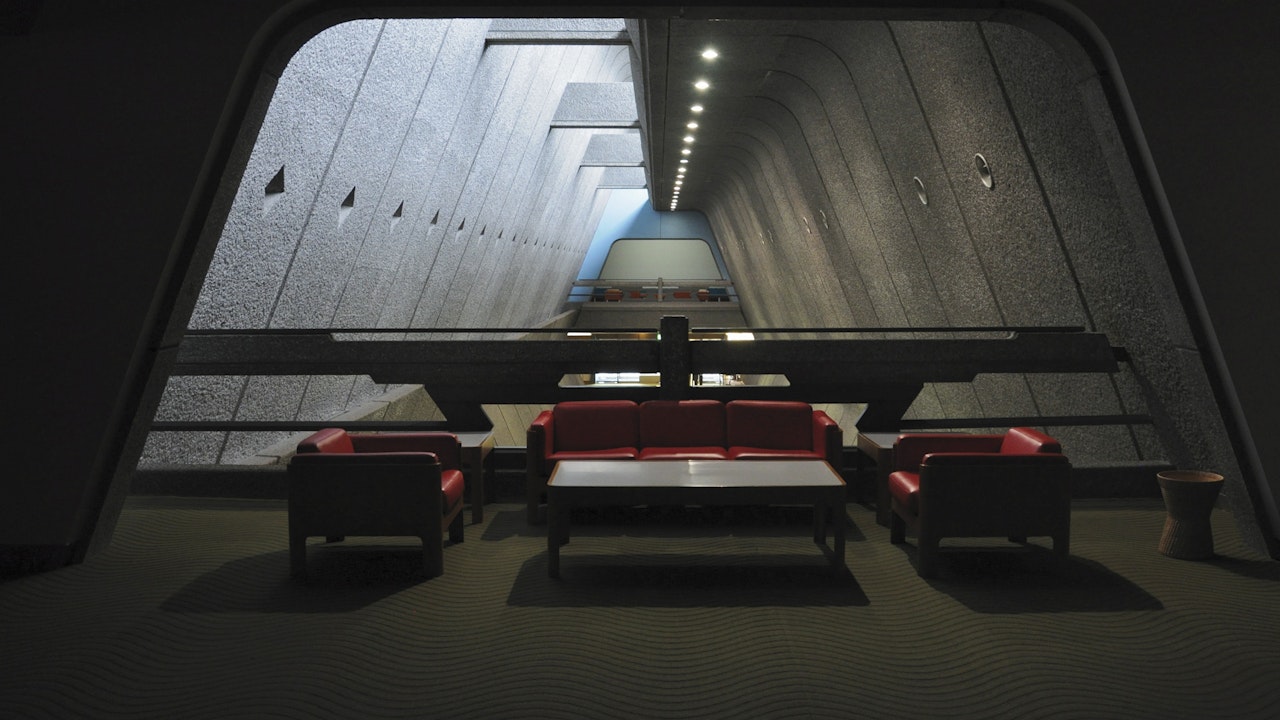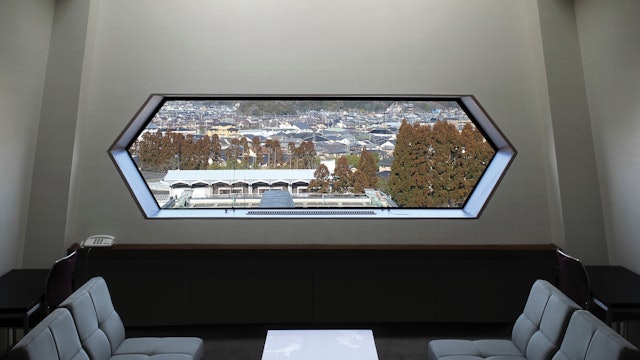Beyond Metabolism
The International Congress Centre in Kyoto became famous through the World Climate Conference in 1997 and the "Kyoto Protocol" that was adopted within its framework. For the first time, the signatory states committed themselves to reduce their emissions of CO2 and other greenhouse gases in order to curb global warming.
Stefanie Gaus and Volker Sattel take this conference, whose course is traced by a translator working at the time and illustrated with archive footage, as the starting point for an exploration of the architecture of the building, the negotiating zone in which the international negotiating partners met.
Built in 1966 by the Japanese architect Sachio Otani, who was a disciple of Kenzo Tange, the building is in the tradition of Metabolism, an architectural movement that envisioned the life of future societies in flexible large-scale so-called megastructures that could be expanded at will. The building is composed of triangular and hexagonal elements, based on structures borrowed from cellular growth phases and life cycles. It manifests a utopia of harmonious coexistence between humans and nature.
Festivals
64.Berlinale forum Expanded
Image Forum Festival Japan
Rencontres Internationales
Architect Africa Film Durban
Duisburger Filmwoche
Dokfilmwoche Hamburg
Kassler Dokumentarfilm- und Video Festival
Nonfiktionale Bad Aibling
Architecture Film Festival Rotterdam
Budapest Architecture Filmdays
Architekturfestival CANactions Kiew
North West Film Forum
Seattle Architekturvisionen
Biennale of Architecture Venice
Archfilm Matinée, Wien
Architekturfilmtage
FDank Architecture Center Copenhagen
Goethe Institut Finnland a.o.
-
Beyond Metabolism
The International Congress Centre in Kyoto became famous through the World Climate Conference in 1997 and the "Kyoto Protocol" that was adopted within its framework. For the first time, the signatory states committed themselves to reduce their emissions of CO2 and other greenhouse gases in order ...



